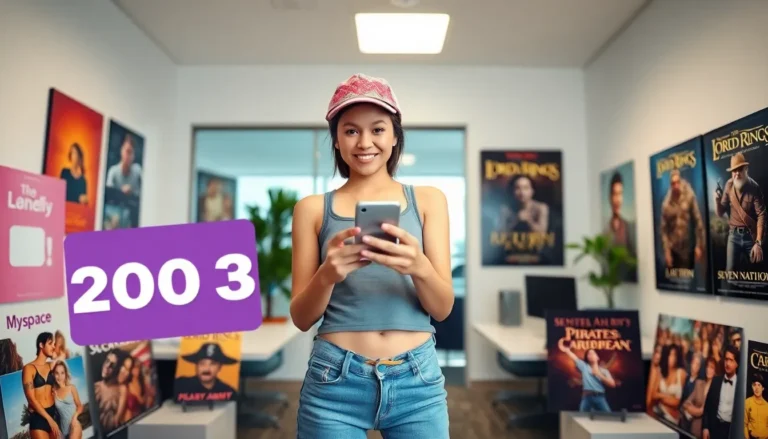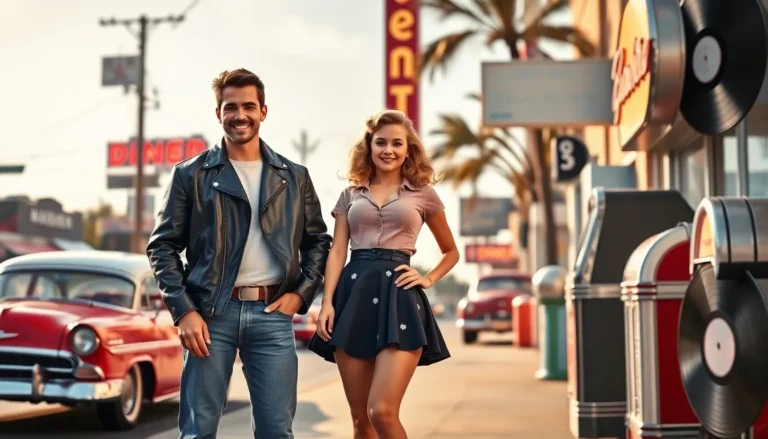Pop culture figures are more than just faces we recognize: they’re the zeitgeist of our times, embodying the trends, issues, and antics that shape our culture. From legendary musicians to groundbreaking social activists, these icons have crafted narratives that resonate with millions. As they strut across your screens, you might wonder, how do they wield such tremendous influence? Buckle in, because we’re diving deep into the kaleidoscopic world of pop culture figures, where fame, societal shifts, and social media intersect in explosive ways.
Table of Contents
ToggleDefining Pop Culture Figures

Understanding pop culture figures is akin to unlocking the door to contemporary culture. At its core, a pop culture figure can be anyone who captures the public’s imagination, think celebrities, musicians, influencers, and even fictional characters. They have a unique ability to mirror societal attitudes, serving as champions of trends, conflicts, and discussions that matter to everyday people.
Take a moment to think about it. A musician like Beyoncé shapes opinions on feminism and race, while a film character like Iron Man tackles themes of responsibility and redemption. In essence, pop culture figures act as conduits, translating complex social dynamics into digestible narratives that resonate with the masses. Their impact can be both profound and polarizing, but one thing is for sure, they rarely go unnoticed.
The Evolution of Pop Culture Figures Through the Decades
Pop culture figures have transformed remarkably from the 20th century to today. The roaring ’20s, for example, introduced us to jazz legends like Louis Armstrong, who redefined music and culture. Fast forward to the ’60s, and icons like The Beatles not only changed music styles but also influenced political sentiments.
The ’80s brought us the likes of Madonna, who pushed boundaries in gender expression and sexuality. With the explosion of the internet in the late ’90s and early 2000s, figures like Britney Spears became household names, marketed through new media channels.
Today, we see the rise of social media influencers, which has completely transformed what it means to be a pop culture figure. Platforms like Instagram and TikTok allow anyone to climb the ladder of fame, creating a more diverse and inclusive landscape. This evolution tells us that the essence of pop culture figures isn’t static: it adapts to the changing tides of society.
Key Characteristics of Influential Pop Culture Figures
So, what makes a pop culture figure influential? Several characteristics set them apart from the crowd.
- Charisma: Influential figures often possess an undeniable charm that captivates their audience. Think about how effortlessly someone like Dwayne “The Rock” Johnson connects with fans, both on-screen and off.
- Relatability: This quality allows pop culture figures to serve as mirrors to the public. Their struggles and triumphs resonate, making audiences feel seen and understood.
- Social Awareness: Figures like Emma Watson and Leonardo DiCaprio show that social responsibility is crucial. They don’t just garner attention: they actively advocate for change.
- Innovative Talents: Whether it’s Lady Gaga’s musical prowess or Timothée Chalamet’s unparalleled acting skills, talent is an undeniable attractor.
These characteristics carve out a unique space for these individuals, allowing them to become not just entertainers, but also advocates and change-makers.
The Role of Social Media in Amplifying Pop Culture Figures
Social media has revolutionized the landscape for pop culture figures, providing them with platforms that previous generations could only dream of. Take a look at platforms like Instagram, TikTok, and Twitter, each one serves as a megaphone amplifying voices, styles, and messages.
For instance, consider the likes of Selena Gomez and Billie Eilish. Both have adeptly used social media to forge intimate connections with fans, sharing their lives, struggles, and triumphs in real-time. This transparency cultivates a sense of community, breaking down barriers between the celebrity and ordinary individuals.
But, social media also has its pitfalls. The scrutiny is relentless, and the pressure to maintain an image can lead to mental health challenges. Nevertheless, the power of social media remains undeniable: it allows pop culture figures to define their narratives, engage with audiences, and remain relevant in an ever-evolving cultural landscape.
Case Studies of Iconic Pop Culture Figures
Examining specific figures reveals layers of impact and influence that are both fascinating and enlightening. Take Oprah Winfrey, for example. Rising from poverty, she created a media empire that not only entertained but educated audiences on various issues, from wellness to social equality. Her influence is so profound that she’s often credited with shaping modern media.
Then there’s Elon Musk, not your traditional pop culture figure, but certainly an influential one. His unconventional approach to technology and bold visions for the future have made him a household name. Whether it’s Tesla or SpaceX, Musk’s escapades have sparked global conversations about innovation and climate change.
Finally, consider BTS, the South Korean boy band that has taken the world by storm. They’ve broken records and championed mental health awareness, proving that pop culture figures can inspire movements beyond music and entertainment. Case studies like these not only demonstrate the depth of influence but also the diverse roles these figures play in our cultural narrative.
The Future of Pop Culture Figures
Looking ahead, the landscape for pop culture figures will likely continue to evolve in unpredictable ways. We’re already witnessing trends that hint at a more inclusive and diverse representation. The rise of authenticity, where audiences crave realness and vulnerability, could reshape how figures present themselves.
Also, the blending of social activism with entertainment will likely deepen. As global issues like climate change or social inequality gain traction, pop culture figures will increasingly align themselves with causes that resonate, creating a symbiotic relationship between celebrity and activism.
With technology advancing rapidly, virtual reality and augmented reality may also pave the way for innovative ways to engage with pop culture figures, making the relationship even more immersive. The future is bright and full of potential, but one thing remains constant, the power of these figures to influence, inspire, and impact society.








